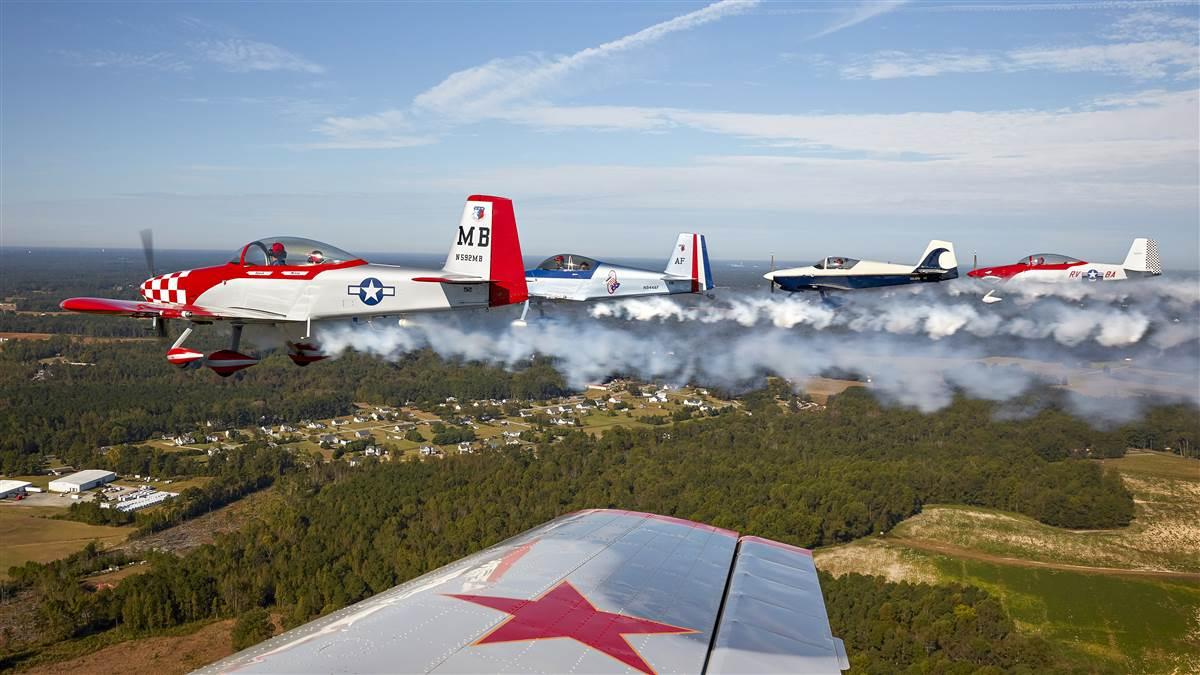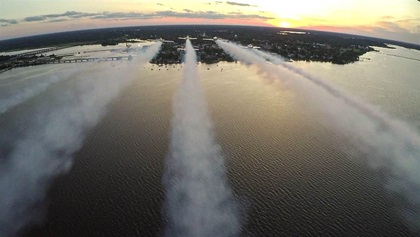Formation Flying: Time over target
Formation flyover secrets

“Very few spectators notice or care if one of our airplanes is a foot or two out of position,” said Jim Kilpatrick, a founder of the Bandit Flight Team, a group of general aviation pilots who perform about 50 formation flyovers a year from Sanford Raleigh Executive Jetport in North Carolina. “But if we miss our time by more than four seconds, everyone notices—and we’re disappointed. We go to a lot of trouble to make sure we’re right on time, every time.”
Making that happen primarily depends on three people: The formation flight leader, the Bandits’ ground coordinator, and the artist who performs the national anthem.
A Bandits flight typically consists of six airplanes, mostly Van’s Aircraft RVs, and they loiter outside their target area prior to the flyover to stay out of view.
The ground coordinator with a powerful mobile radio base station is stationed at the flyover location. Handheld radios just aren’t powerful enough to communicate reliably with aircraft at distances of 10 miles or more. The ground coordinator keeps the flight leader informed about any last-minute schedule changes in the minutes leading up to the flyover.


The artist must know precisely how long they will perform—and stick with it.
Most renditions of the national anthem take about 90 seconds, Kilpatrick said, but a few artists, like the late Aretha Franklin, have been known to sing twice that long. The key for the ground coordinator is knowing the exact time in advance, and adjusting if necessary.
Since the Bandits were formed in 2009, the now 17-member team has overflown hundreds of North Carolina State University football games, NASCAR races, Durham Bulls baseball games, charity events, and military ceremonies. All the pilots have FAA commercial certificates, and many are former military fliers.
When the anthem begins, the flight leader starts the run-in to the target at a GPS ground speed of 120 knots—exactly two nautical miles per minute—a speed that simplifies the math. Their minimum altitude is 1,000 feet agl.
There’s a lot of communication and quick calculations for the flight leader and the ground coordinator. The other pilots in the formation simply focus on staying in position.
“All they have to do is listen for the ‘smoke on’ and ‘smoke off’ and look good while they’re doing it,” said Kilpatrick, a former U.S. Air Force and airline pilot. “Those are the fun jobs.”
Email [email protected]



